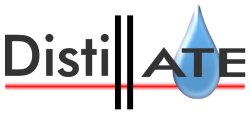


|

|
|
|||||||||
|
|||||||||
Project E Improved Mechanisms for Funding and Phasing of Implementation
The objective of DISTILLATE Project E is to identify the implications of different funding strategies and contractual arrangements and ways by which implementation may be phased, in order to achieve a more effective delivery of sustainable transport and land use schemes. The project therefore seeks to understand the funding procedures which affect transport and land use projects and how these procedures affect project implementation; it will go on to develop and test methods for dealing with different funding strategies. A key element of the DISTILLATE project is the use of local authority case studies to investigate each of the project topics. There are five laboratory case studies that have been chosen for Project E. These are: Bath and North East Somerset - Colliers Way cycle route; Bristol City Council - Showcase Bus Routes; Sheffield City Council - City Centre Redevelopment; Strathclyde - Glasgow Airport Rail Link; and Surrey County Council - Fastway Service and Horley Housing development. There are two key outputs of Project E. These are as follows: E1: Funding Toolkit for Decision Makers The aim of the Funding Toolkit is to provide decision-makers with an overview of potentially available funding sources to use for a variety of schemes/projects. Local authorities often face barriers when identifying or applying for funding, and this toolkit will help them in both identifying alternative sources of funding to perhaps the most obvious sources, and highlighting the potential barriers at an early stage. The Toolkit will provide advice on using various sources of funding, including private sector, other central, regional or local government initiatives, initiatives of governmental organisations or bodies, and the voluntary/charitable sector. The Toolkit will provide descriptions of existing sources, the types of schemes that they can be used for, case study examples of the funding source used in practice, and the potential benefits and disadvantages of using the source. Advice on partnership working will also be provided (links with Project D). E2: Guidance to Funding Agencies Unlike the funding Toolkit, which is aimed at local authorities addressing funding barriers that they may face, this guidance will be for the potential funding sources of transport and land use schemes/projects (including DfT) and will identify and examine the funding barriers faced by LAs and the potential implications this may have, on both the organisations and the resultant schemes. Where appropriate, recommendations on improvements to funding mechanisms will be made. The guidance note will be based on the barriers work undertaken in Projects A and D, Project E case study and toolkit research, and discussions with local authorities during the Project E Funding workshop. The Project E Funding Toolkit which is under development is for use by local authorities and decision makers. Following on from the Funding Workshop (held in October 2006, London) Project E would like to know what you would like to see in it. Project E is looking for good practice (and 'bad' practice!) examples/case studies demonstrating the use of various funding sources for a number of scheme types which can be used to illustrate issues that may be covered in the Toolkit. Please send your comments, case studies, links to articles etc to Charlotte Brannigan (Project Manager) at cbrannigan@trl.co.uk. Alternatively, give Charlotte a call to discuss any ideas you may have on 01344 770263. Project Manager: Charlotte Branningan, TRL Email: cbrannigan@trl.co.uk |
|||||||||
|